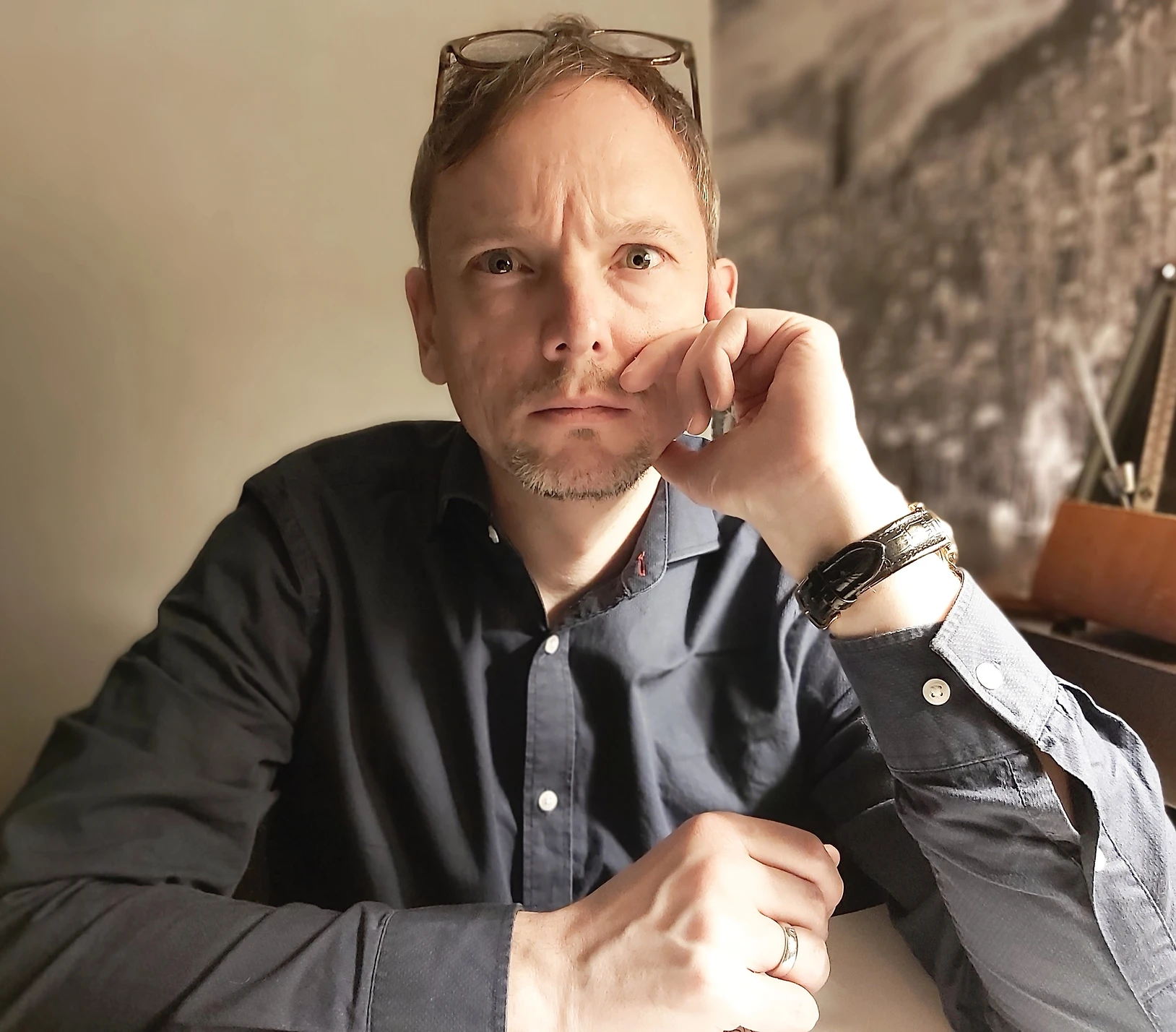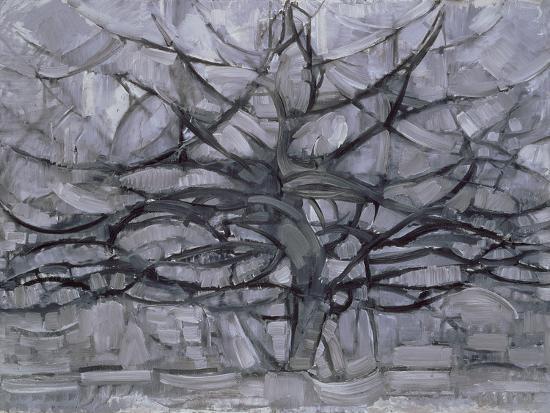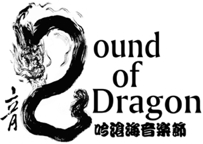
“Cool and aloof as a Hitchcock blonde.” Seattle Weekly
“Top has an ear for orchestral colour second to none. The work reflects an earthy neo-primitivism” The Vancouver Sun
“… horror composer Edward Top acted as a kind of snake, hypnotizing listeners as frightened little bunnies …” NRC Handelsblad

In 1996, a Dutch newspaper deemed Edward Top as ‘Horror Composer’, an enduring moniker for a young newcomer. Top’s eclectic musical language has since grown into an amalgamation of expressionism, postminimalism, film noir, post-rock, extreme metal, and the visual art of Hieronymus Bosch, James Ensor, Francisco Goya, and Andy Warhol. His sound often oscillates between opposing forces, using rich textures in detailed orchestrations.
Top is especially influenced by composer Wolfgang Rihm, in works such as String Quartet No.1 (1998) and Concerto for Violin and Two Orchestras, Witte Wieven (2007). In Totem, for orchestra (2012), the lyric expressionism of Witte Wieven meets the dark orchestral colours of György Kurtág and the fast drumming of the extreme metal genre. The Vancouver Sun identified it as “earthy neo-primitivism.”
Since 2013, Edward Top’s music has evolved from his expressionistic roots, as he battled towards and away from the grand narratives of modernism. His recent pieces reflect a simpler tone of purity and honesty, and an economic use of musical material, but still characterized by recurring themes such as the grotesque, the primal, and the sublime. For example, in the piece Pots ‘n Pans Falling (2013), a stark contrast to his previous stylistic splurges, the members of the ensemble echo a recording of Top’s 7-year old violin student playing a fragile, yet haunting motive. It was composed to commemorate the young survivors of the Sandy Hook shooting.
Edward has collaborated with Chinese musicians, which has enriched his orchestration palette with works such as Confluence (2021) for erhu string quartet, Farewell Songs (2023) for countertenor, Baroque and Chinese instruments, and The Grey Tree (2024) for Chinese chamber orchestra. In the latter, Chinese instruments incorporate elements from his Dutch heritage.
“The Grey Tree” (2024) – Edward Top
for dizi, flute, erhu, erhu or violin, guitar, ruan, zheng, cello, percussion,15″00
《灰樹》- 愛德華.托普,笛子、長笛、吉他、二胡、小提琴、阮、古箏、大提琴、打擊
Dutch artist Mondriaan’s 1912 painting The Grey Tree represented the transition from figurative representation of the real world to the abstraction of the spiritual world behind it. Mesmerized by the painting’s symbolism of timeless life and wisdom, Edward transferred the painting’s tapestry of grey waves, lines, and geometrical shapes to music, in which individual instruments are absorbed into a fabric of swirling tree-branch lines, creating constantly shifting shades and shapes like the murmuration of flocks of birds or schools of fish.
此曲的創作受到荷蘭畫家蒙德里安1912年的畫作《灰樹》的啟發,畫作呈現的風格由寫實主義過渡到抽象概念。托普把畫裡象徵著永恆的生命與智慧的灰色波形、線條、幾何對稱的佈圖等轉化成音符,每樣樂器則宛如大樹的枝幹,間隙中落下斑駁的光影,閃爍其中如同成群游移的魚兒,或是振翅而起的鳥群。托普運用荷蘭現代音樂的微卡農技法創作,將相同的動機間隔一拍或半拍由不同的樂器演奏,從而形成繁複的節奏,並在荷蘭後極簡主義音樂風格的不和諧音群與五聲音階的起伏之間尋求平衡。
Microcanon 微卡農
Echoing the heterophony of traditional Chinese music, in which several instruments play different versions of the same motive simultaneously, is a technique called the microcanon from the composer’s Dutch heritage. With microcana, each time a player enters with the same motive, a beat or a half beat apart, it creates a canonic presentation of the material in polyphony, albeit on the microscopic level. You can also compare it with the delay effect of an electric guitar. A specific trait of this post-minimalist style in Dutch music is that it is more chromatic, creating dissonant swarms of music.
“Confluence” (2021) – Edward Top
for 2 erhu, viola, cello, 9″00
《匯流》- 愛德華.托普,兩把二胡、中提琴、大提琴
Confluence brings together the prolation canon of Renaissance technique with the heterophony of Chinese music. I first became familiar with Asian music and instruments during my time as a violinist in the Bangkok Symphony Orchestra, and when students at the Bangkok Symphony Music School showed me the saw duang, the Thai version of the erhu. I noticed in traditional Thai and Chinese music how each musician plays the same melodic lines with different ornamentation to compliment one another, creating a heterophonic texture. My recent works have combined this approach with Dutch minimalist microcanon technique, where a motive in unison is played deliberately out-of sync by a (dotted) quarter or eighth note, producing a delay-effect.
In Confluence, I have taken this technique into a new direction with the prolation canon. Similar to the microcanon, the instruments play the same motive canonically, entering one after another. However, in the prolation canon, they also play at different speeds. Each time the motive starts at different instances in each voice, polyphony is created as each version against one another sounding out-of synch. Gradually the instruments line up into short moments of unison and then drift apart again. Ornamentation idiomatic to both Chinese and Western string instruments is used to create varied surface textures. All four instruments play in the same register, bringing the viola, and especially the cello to their highest register. With special attention to adjusting the tone, articulation, and vibrato in order to balance between the two erhus with the Western strings, the result is a sophisticated ensemble. A word of gratitude to Ms. Lan Tung, who, with the Vancouver Erhy Quartet commissioned the work.
《匯流》(Confluence) 借鑑亞洲傳統音樂常見的齊奏,配合荷蘭現代樂手法「微卡農」(micro canon),每個樂器雖然演奏同一旋律,但時間上稍微錯開,用刻意營造出的不整齊,形成複雜的節奏 。
